Wood sculptures made in Van Ha commune are popular in a locality with the largest number of products recognized by the three-star OCOP (One commune – One product) and the commune received the outstanding rural community award. The craft has pushed Dong Anh district to become a spotlight in implementing the OCOP of Hanoi.
We met Do Danh Nam, a skilled sculptor in Van Ha who has 30 years of experience in sculpturing and teaching the traditional craft to many locals as well as people from other places. He said that there were five villages doing sculpting, such as Thiet Ung, Ha Khe, Co Chau, Thiet Binh and Van Diem. The villages produce various products like paintings, statues, furniture and souvenir items.
Van Ha wood products are made from valuable types of wood, including iron wood, burmapadauk wood and fokienia wood. After selecting their materials, the sculptors will sketch the products and then make a crude shape for these items. Sculptors use special tools to sculpt in detail which decides the shape as well as the delicateness of the products. Most of sculptors are men and the salary of a skilled artisan is about 500,000 to one million dong per day.
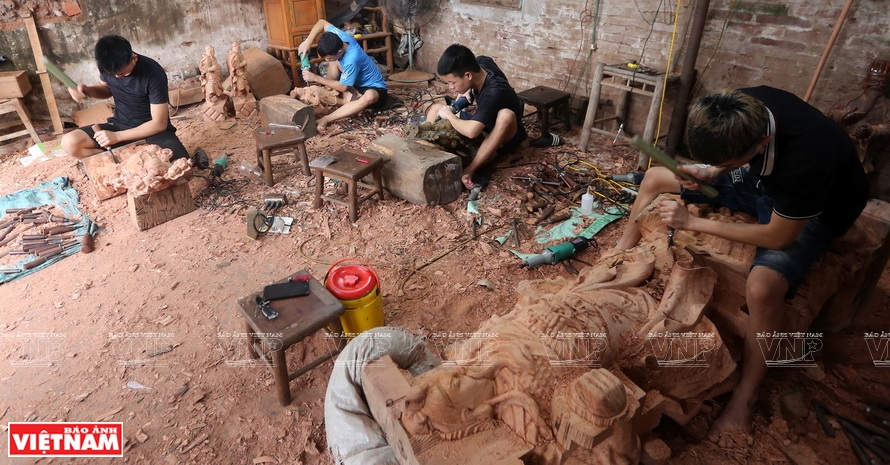
A workshop in Van Ha commune, Dong Anh district.
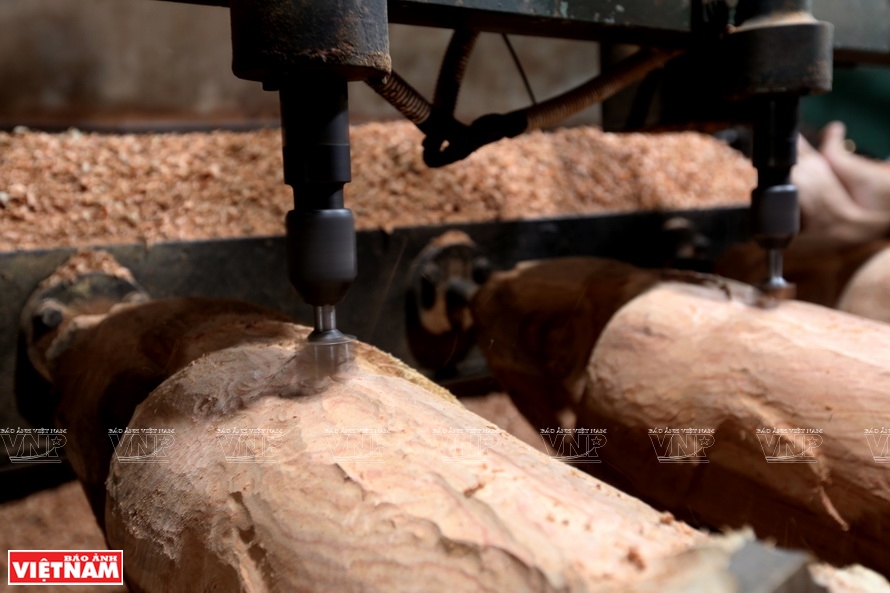
Using machines to make crude shapes for products at a workshop in Van Ha.
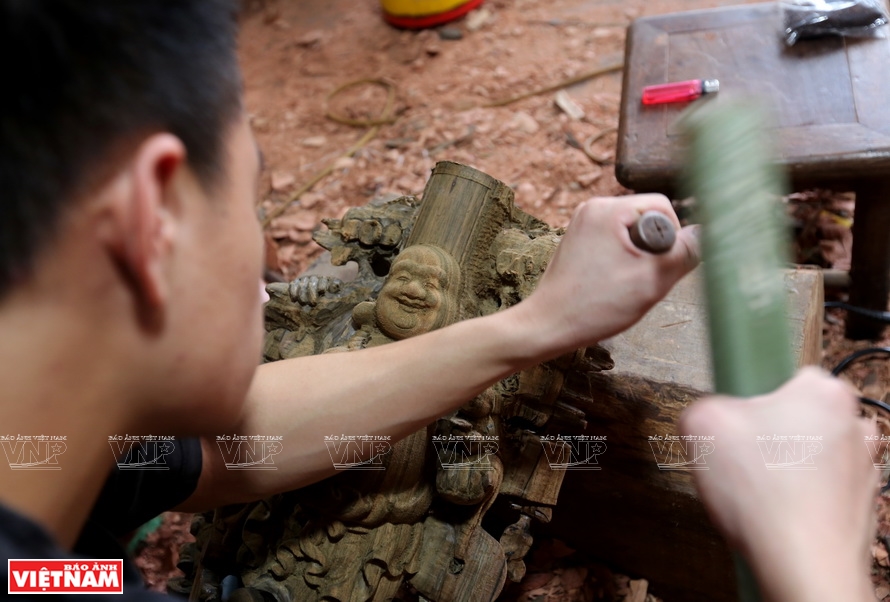
Various paintings, statues, furniture and decorative items.
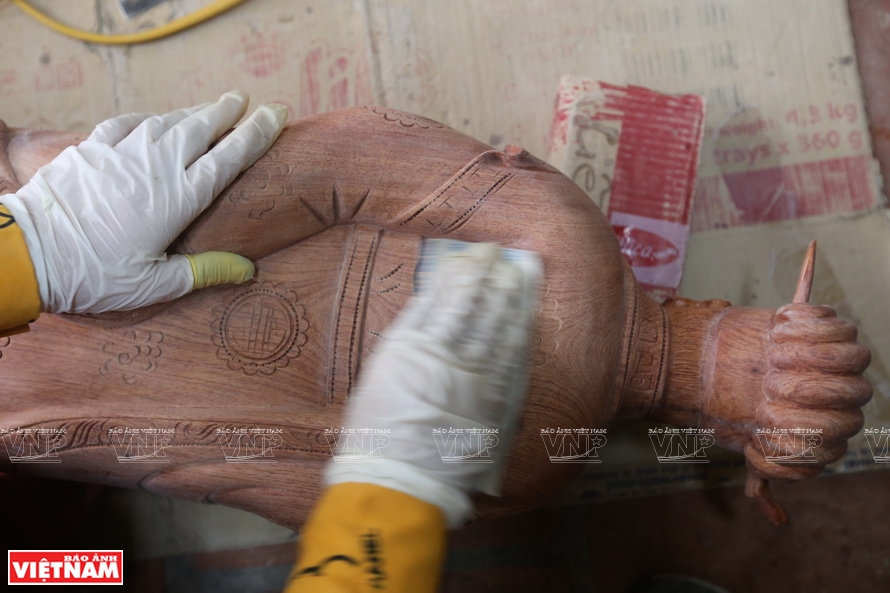
Smoothing stage.
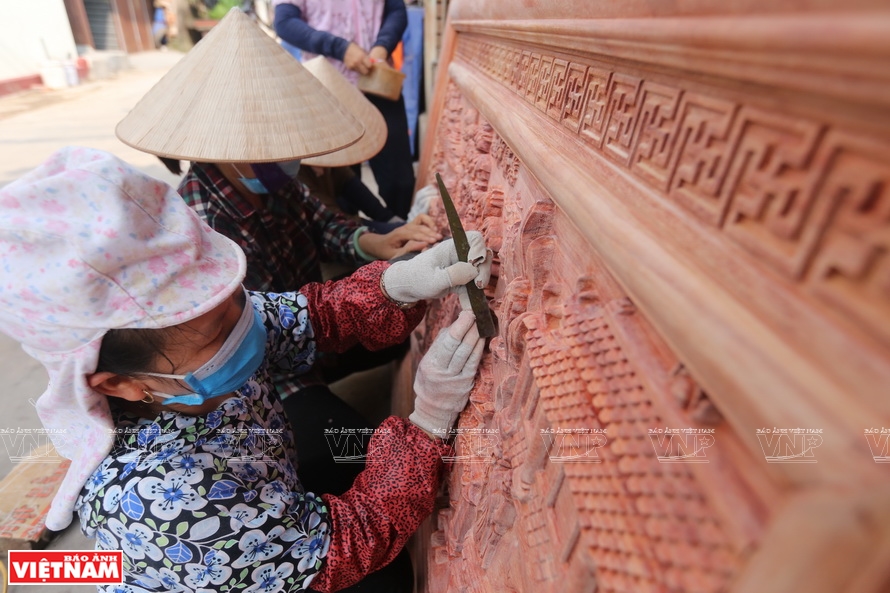
Locals in Van Ha try to maintain the traditional craft.
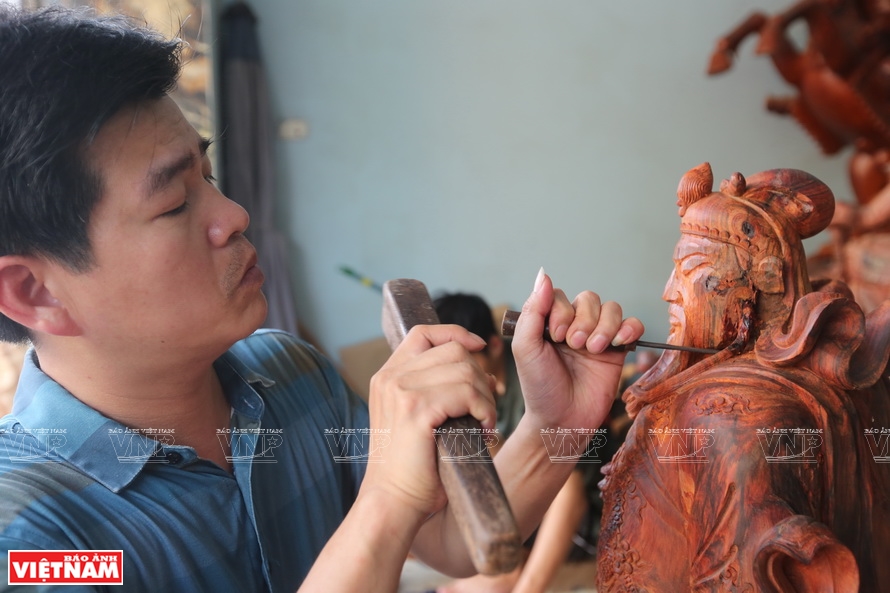
Small patterns require sophistication.
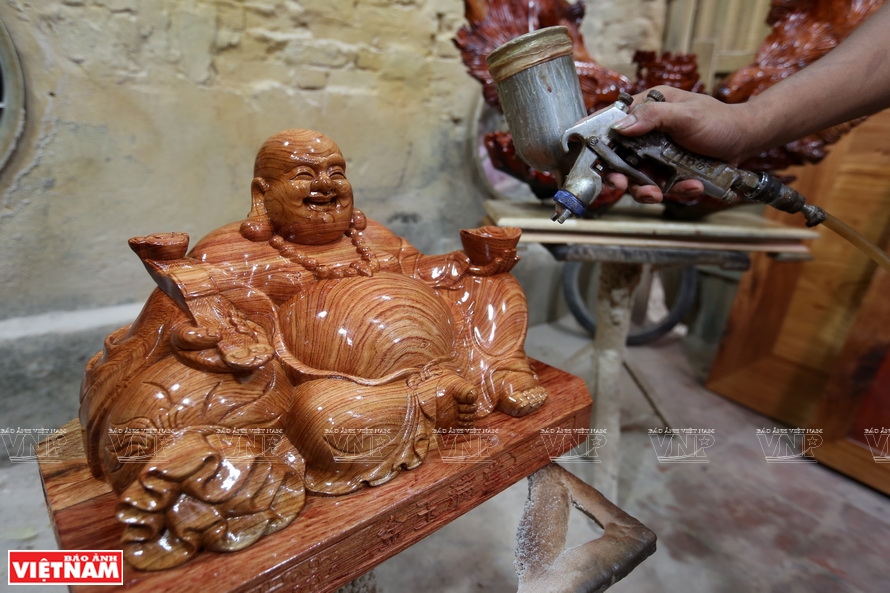
Painting process.
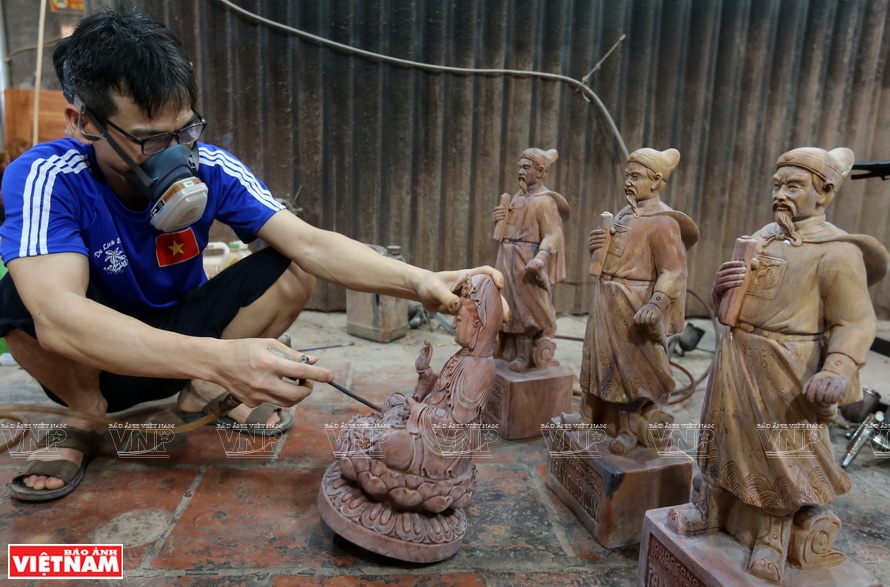 A sculptor can make three or four products per day. A sculptor can make three or four products per day. |
At present, many households in Van Ha have CNC machines, worth about 400-500 million dong to speed up the sculpting. Right after finishing the crude sculptures, the artisans begin to complete each item. The final stage is to smooth the product which is done by women who make 200,000 – 300,000 dong/day.
Seeing the benefits of the OCOP program, many households in Van Ha commune have attended the program and received certifications for OCOP’s products. These include Dao Van Anh’s family with three products of “Vu dieuchimcong” (Green peafowl’s dance), “Thieu nu muaxuan” (Spring girl), “Tulinh hoi tu” (Four scared animals gather) and HiepSy workshop with three works of “qua mit” (jack-fruit), “Cakim long” (dragon fish) and “Te giac mot sung” (Rhinoceros).
Attending the OCOP program has helped the households introduce their products, design brand and traceability labels which attracts both domestic and foreign customers from China and Japan.
Unique products from Van Ha commune
Vice chairman of Dong Anh district people’s committee said that right after receiving the OCOP plan, Dong Anh district has scheduled all activities for this year and informed all related departments, workshops and locals. Hopefully, the district will have more new OCOP products, promoting local economic development.
Story: Ngan Ha - Photos: Khanh Long